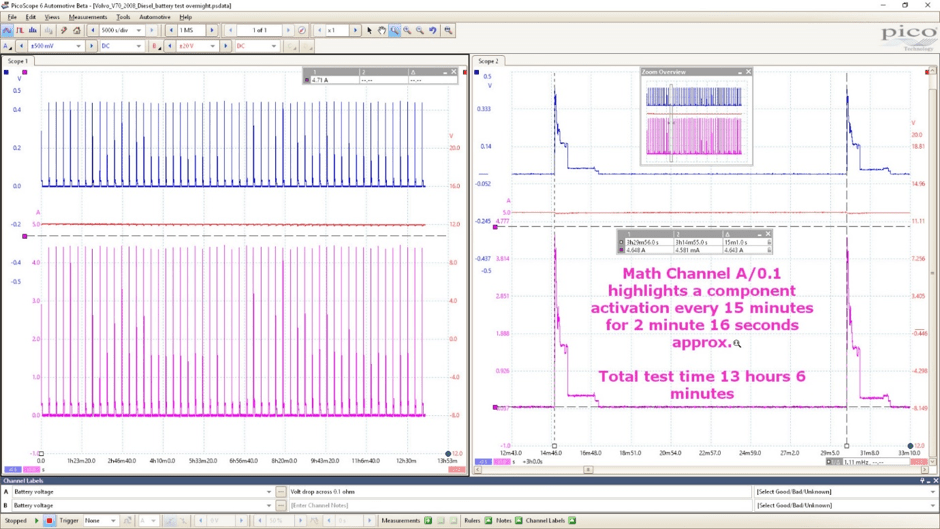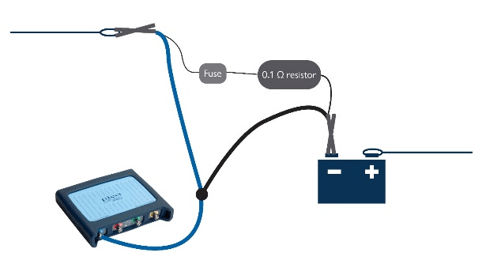Parasitic Drain Current Testing
A parasitic drain current test can take place over many hours. The battery in your current clamp might run down so using a resistor to measure current, calculated using a PicoScope maths channel is a solution. This article builds on the Pico's Parasitic Drain Current Test.
Choosing a Resistor
| P | R | Max I |
|---|---|---|
| 5W | 0.1Ω | 7A |
| 10W | 0.1Ω | 10A |
| 50W | 0.1Ω | 22A |
A low value resistor is best because it offers the least resistance to current and dissipates less power. The lower the resistance, the lower the voltage. We suggest a 0.1Ω resistor because it is easy to convert voltage to current (multiply by 10, see below).
Sometimes you might need to do a little preparatory maths to setup a test. Calculating the maximum current that a resistor can carry is an example and this is the formula:
I = √(P/R) where:
- I is Current in Amps;
- P is the maximum resistor Power in Watts; and
- R is the resistor's resistance in Ohms
Notice that the relationship is not linear - doubling the resistor wattage does not double the current.
Ohm's Law
The current through a resistor is the voltage divided by the resistance
V / R = I. Use a maths channel to calculate the current – multiply Channel A by 10 (same as dividing by 0.1 Ω).
Setup
The diagram shows a setup which uses a fuse rated to protect the resistor and measures the voltage across the resistor (and fuse). This is the usual setup for this test but we suggest that if possible, always measure across the resistor (between it and the fuse) as the fuse has extra resistance which might affect the results. If you cannot avoid including the fuse, remember to add its resistance to the resistor’s resistance. Use the formula: V/(0.1 + RFuse), where RFuse is the resistance of the fuse.
Procedure to protect the resistor (and to prevent the fuse from blowing)
Disconnecting the battery to insert the resistor can start a power-up sequence and a large current can flow when the battery is reconnected, even if ignition is off.
- Short the resistor and the fuse out using a heavy piece of wire to divert current away from them.
- Only once the short is in place, connect to the battery.
- Use a current clamp to ensure that the current does not exceed the resistor’s capability.
- When the current has dropped to an acceptable level, the short can be removed and the voltage across the resistor can be measured by the scope.

Results
The Maths Channel (Pink) shows the current. A component wakes up every 15 minutes for approximately 2 minutes and 16 seconds. The total test time was about 13 hours.
Derived from Steve Smith's excellent series on the Maths Channel Maths is Cool on the Pico Auto website.

